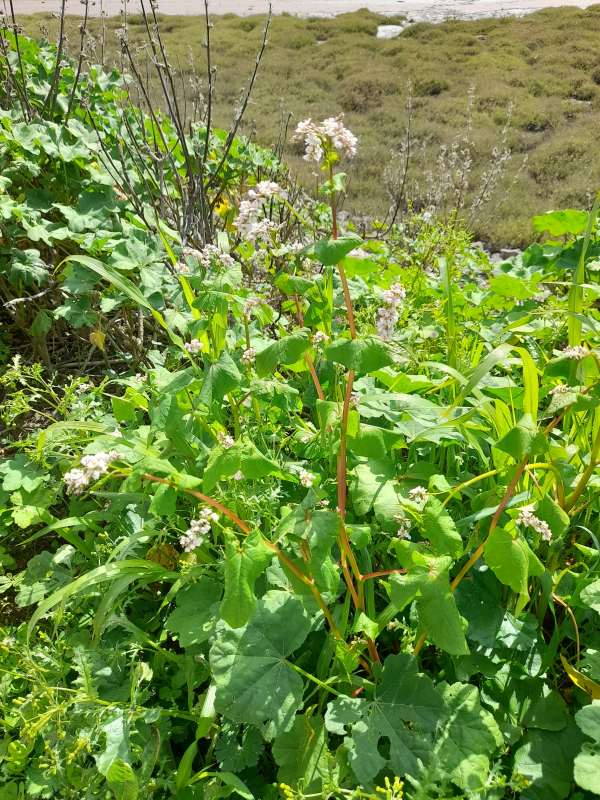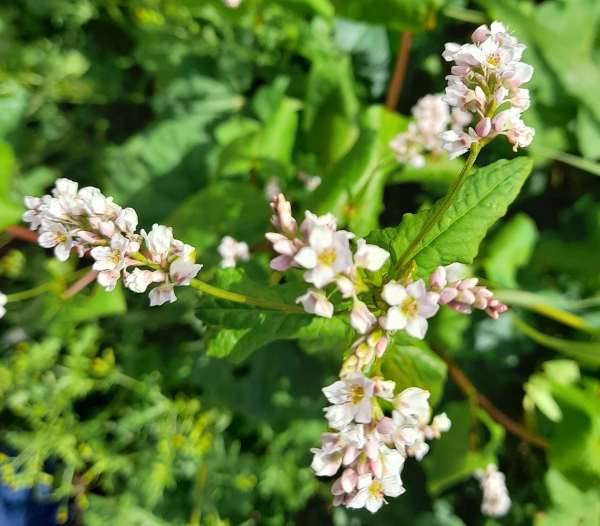Fagopyrum esculentum - Buckwheat
Phylum: Magnoliophyta - Class: Equisetopsida - Order: Caryophyllales - Family: Polygonaceae

Buckwheat (of which there are several similar species) was introduced to western Europe from China and other parts of Asia several hundred years ago. It is also a relic of cultivation: while no longer considered as a useful crop plant in Britain, it is still grown commercially in some parts of eastern Europe and Asia.
Description
The red-tinged upright branching stems of Buckwheat are only very slightly hairy, Its leaves are shaped like arrowheads, and the five-tepalled flowers grow in dense racemes at the tips of shoots. Pink and white, the individual flowers are typically 5mm across. This annual weed grows to typically 40 to 60cm in height.

Distribution
In Britain this is mainly a southern species, common in the south of England and found less often in Wales, it is quite a rare sight in Scotland and in Ireland. The plants shown on this page were growing beside a track on the edge of the Conwy Estuary near Deganwy.
Habitat
You will find this rather attractive weed in wasteland, rubbish tips, built-up tracks and field margins as well as in disturbed land - for example beside farm gateways.
Blooming Times
In Britain and Ireland Buckwheat usually blooms from July through to the end of August, but in sheltered spots you may still see it in flower as late as mid September.
Uses
Formerly Buckwheat was used as a crop plant, and its seeds were ground to make a kind of gluten-free flour. Bees and hoverflies are attracted to the flowers of Buckwheat.
Etymology
Fagopyrum, the generic name, comes from the Greek words Fagos, meaning beech, and pyrum meaning wheat. (The triangular seeds of Buckwheat resemble tiny beech nuts.) The specific epithet esculentum is Latin and translates to 'edible'.
Similar Species
Redshank Persicaria maculosa often grows in the same habitats as Buckwheat and its stems generally have a red flush, but the dark spots on its leaves readily distinguish it from Buckwheat.
Please Help Us: If you have found this information interesting and useful, please consider helping to keep First Nature online by making a small donation towards the web hosting and internet costs.
Any donations over and above the essential running costs will help support the conservation work of Plantlife, the Rivers Trust and charitable botanic gardens - as do author royalties and publisher proceeds from books by Pat and Sue.



